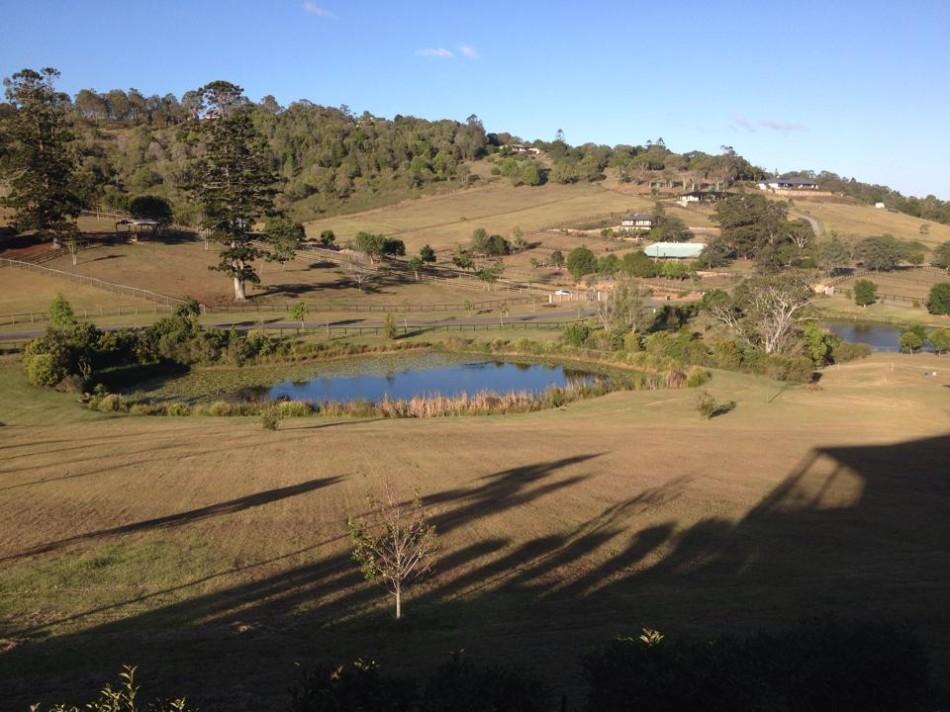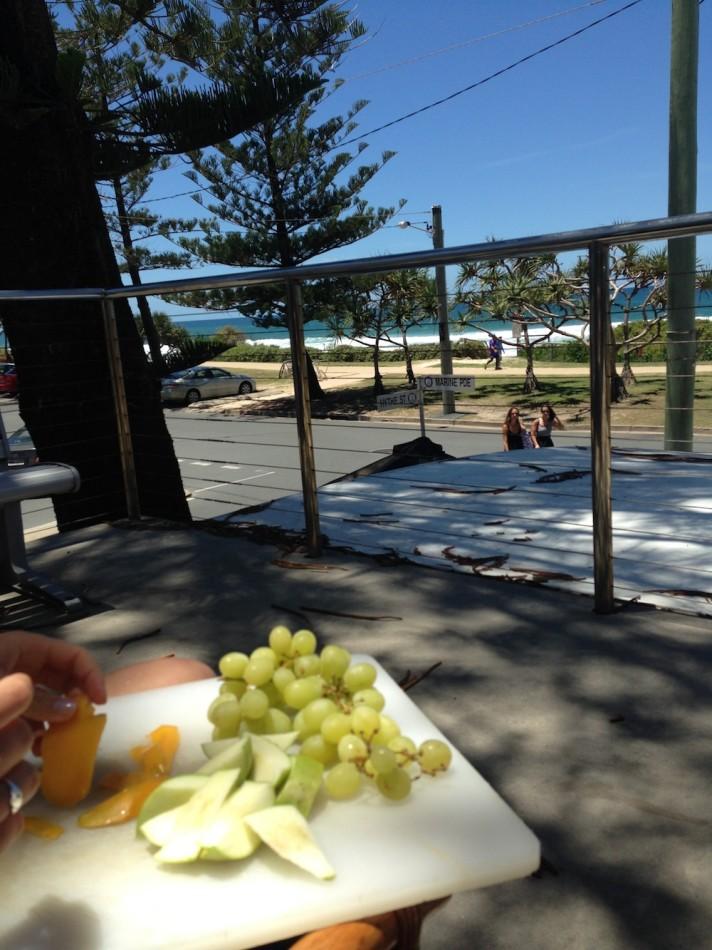Around the World in a Day
March 12, 2014
The sun beats down on students living in the Southern Hemisphere, many of whom flock indoors for an “icy-pole” to escape the humidity or outside to bask in the summer sun. Meanwhile, those living up North in Taiwan endure the humid cold. Not only do these students live in different geographical locations, but they also live varying lifestyles to handle their surroundings.
Saint Stephens College: Emma Josey, Lauren Tricky, Chiara Marx, Nicola Geldenguis
School Life:
For students at Saint Stephen’s College (SSC) in Coomera, Australia, school began only two months ago on Jan. 27. Their “Christmas” holiday break, which began on Nov. 28 and happens to be in the summer, signaled the end of their school year.
For Chiara Marx (12), returning to school after their Christmas break was difficult, as she found that her workload had doubled after entering 12th grade.
“It is very nice seeing all of your friends again and being able to hang out with them every day,” Chiara said. “School is very fast paced here; we have a lot of content that we have to get through in a short period of time, so it can be hard sometimes keeping up with everything.”
As for their daily school lives, many students begin their day around 6 a.m. to ensure that they get to school for morning activities prior to the school day.
“I start off Monday [to] Thursday mornings with bands including Concert Band, Stage Band, Orchestra and Clarinet Quintet [from 7:15 a.m.],” Emma Josey (12) said.
Aside from musical interests, some students have leadership and teacher-assisting roles.
“I have prefect duty from 8 [a.m.] to 8:15 [a.m.],” Chiara said.
Others use their mornings to exercise train for sports tournaments.
“On selected mornings I attend aerobics training as last year I competed for my state and want to again this year,” Lauren Tricky (12) said.
Following morning activities, “tutor group” (homeroom) precedes the official beginning of school, at 8:30 am. After homeroom, students attend their first two classes for 55 minutes each, followed by “morning tea,” which is essentially a break period. After another two classes, there is a 45 minute lunch period, in which students can attend tutorials in the library and club meetings.
Because SSC is a school that ranges from preparatory to 12th grade, students have found their own “hang-out” spots to meet and have lunch.
“Although we have ‘designated areas’ which we mostly stick to, we sit all over the school,” Chiara said. “My group usually sits in the undercover area around our canteen or just outside our library because there are sometimes up to three grades in one area.”
After a total of six classes in the day, school ends at 3:15 p.m.
Moving up to the Northern Hemisphere, students who attend the Taipei American School (TAS) begin their weekdays with an early rise—school starts at 7:45 a.m. and students either ride the school bus or are driven to school by their parents or drivers. Once at school, students attend five 80-minute periods, four classes and one lunch break. Classes operate on an A and B schedule, meaning students attend their classes every other day, for a total of eight class period options.
“I like the alternating schedule,” Juliana Chang (11) said. “It means when we have class, we get more time to dive deeper into the subject, instead of having to jump from room to room. It also gives you more time to get homework done.”
In terms of the academic sphere, students find the ambitious atmosphere to be beneficial.
“I think TAS is definitely a competitive school; there’s a lot of comparison and unofficial ranking going on,” Juliana said. “I’ll admit I do compare myself to others, but for me it’s motivational because it encourages me to do even better.”
After School Life (Extracurricular Activities):
SSC offers a medley of music-oriented clubs: Concert, Stage, and Funk bands, Drumline, Orchestra, Chamber Orchestra groups, Cantica Ludi (singing group), many of which take place in the mornings about an hour before school actually starts.
Other activities offered include debate, public speaking, and chess clubs, as well as additional languages that students can learn. The school is also involved in a sports competition with other private schools called Association of Private School Sports. After school, many students partake in a sport or in a band, before returning home to finish homework.
Extracurricular activity options are very plentiful after school ends at 3:35 p.m. at the TAS – students can partake in seasonal sports as well as other commitments they have. The school is quite focused on its badminton team, which has won gold consecutively in competitions. In addition to their seasonal sports and typical clubs, there is World Vision (humanitarian aid club), Orphanage (underprivileged community help), and Blue and Green (student-run newspaper for current events in Taiwan) club, and a Latin and Greek Honor Society.
The school is also located in a suburban area closely surrounded by restaurants and shops, which provides students with a quick refresher. After returning home via their daily transportation, they finish their homework, which takes about two or three hours on average.
Some students juggle both their academic obligations as well as sports and other additional activities.
“The academic load is manageable,” Berlin Cheng (12) said. “I actually credit most of my productivity to having extracurriculars that take up my time since I learn to better manage my time and not procrastinate.”
Weekends:
On weekends, students try to strike a balance between school, socializing, and entertainment. While some students have school-related activities such as sports meets or more club meetings, they also enjoy watching the occasional television program or movie and spending time with their friends.
Those in Australia find ways to cope with the summer heat while enjoying their time with their friends.
“We have theme parks, and two of them are called Wet and Wild and White-Water World,” Chiara said. “If [my friends and I] ever get hot and [one of us] ha[s] a pass, we normally end up there or at the beach.”
While the beach is a favorite for many, students also like to grab food and catch some entertainment.
“Usually, [my friends and I] arrange to meet at each others’ houses, but also [to] go to shopping cent[er]s or to the cinemas to watch a movie,” Emma said. “However, we also arrange to meet for brunch at cafes, or go to the beach fairly often—like 24/7.”
In Taiwan, abundant places to explore and accessible means of transportation allow for multiple weekend activities. Many students like to ride UBikes (government rental bikes), the subway, taxis, and buses to travel around town.
Juliana, who lives in Tianmu, an eclectic expat-centric neighborhood, finds time to explore the metropolis of Taipei when she has free time.
“Transportation in Taipei is super convenient, so it’s easy to go on lots of adventures around the city,” she said.
Additionally, there are copious places for students to meet with their peers, and plenty to do as well.
“The night market is a great place to go! It’s usually always packed with people and it’s very exciting,” Berlin said. “Besides the night market, we go to the movies, we go biking, we can go downtown, where there are a lot more exciting shops and restaurants, [and] we go hiking.”
Hot and Cold Climate:
Bathed in summer heat and humidity, the Gold Coast has a temperature in the 80 to 90 degree Fahrenheit range and a humidity of up to 90 percent.
“We cope by blasting the aircon in every class, room, [or] car,” Emma said. “Going to the beach is a regular activity, and ice cream is pretty much all we eat.”
Some students are not a fan of the heat.
“It’s bloody humid,” Nicola Geldenguis (12) said. “It’s like breathing in soup, and receiving a really warm hug from the heat every time you step outside. Staying cool is a matter of cranking up the AC and just sitting. Like, directly under it. And then you just stay there. Alternatively you could swim, or have an icy-pole.”
On the contrary, Taiwan is a mixture of cold and humidity; the temperature is usually around 50 degrees Fahrenheit.
Many students have harbored a dislike for the humidity, but do not mind the cold, as it does not last long.
“It won’t snow, but the humidity makes it so that even if the temperature isn’t that low, it’s still that chill-to-your-bones kind of feel,” Juliana said. “I don’t own any jackets… it’s usually hot here, with cold flashes, so I just kind of man up when it’s cold. I prefer winter because the summers here are disgustingly humid.”
This piece was originally published in the pages of The Winged Post on March 12, 2014.

